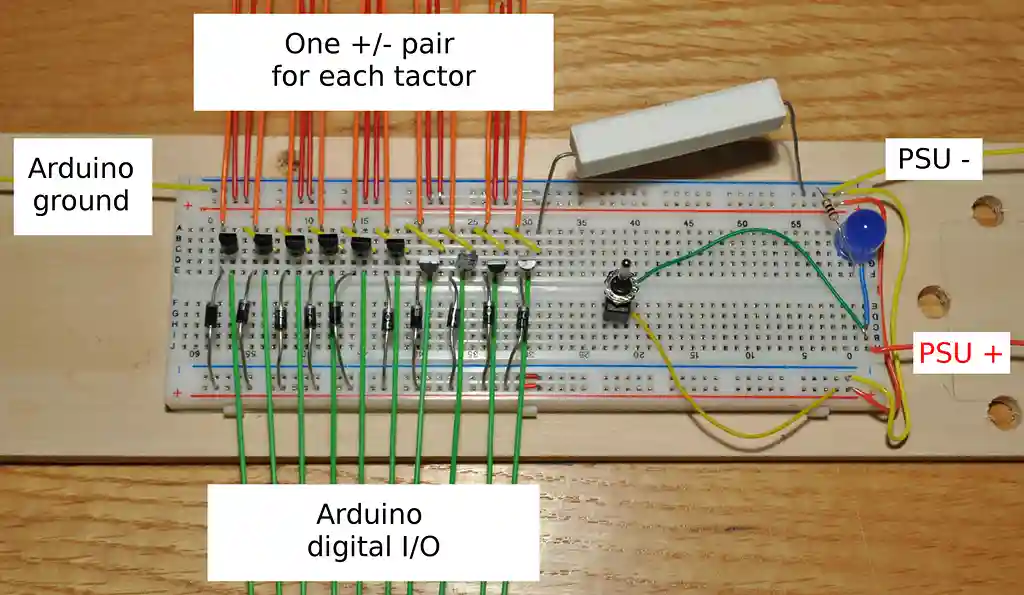Earfingers aims to offer an innovative way for individuals, especially those with hearing impairments, to experience sound. The circuit for Earfingers uses an Arduino to control the vibration motors. First and foremost, I must acknowledge that I am standing on the shoulders of giants—people whose open contributions to the community made this project possible. Without the countless individuals who freely share their knowledge, projects like this would be unthinkable.

What Are Earfingers?
Earfingers is a wearable device that allows users to “feel” sound through vibrations transmitted to the fingertips. This project leverages the fascinating relationship between touch and hearing, drawing inspiration from the auditory system, specifically the cochlea’s wavelet transformation process.
The Science Behind Earfingers
Human hearing involves a complex system of sensors in the cochlea that converts sound waves into neural impulses. This process is incredibly intricate, with the cochlea decomposing sound into a series of frequency components—a process known as wavelet transformation. Interestingly, the tactile sensory system operates within the same frequency range (50–250 Hz) as hearing, suggesting that the brain might be able to interpret sound through touch. This idea is the foundation of Earfingers.
How Earfingers Works
The device functions by converting audio signals into vibrational feedback, allowing users to “feel” the sound. The process involves:
- Microphone Input: Capturing environmental sound.
- Arduino Input Processing: Converting audio signals into vibration patterns.
- Tactile Feedback: Vibrations transmitted through motors placed on the fingers, allowing users to feel the sound.
Building Earfingers: A DIY Guide
To bring Earfingers to life, you’ll need:
- Arduino Uno (or similar microcontroller)
- Audio Sensor Module (e.g., KY-037)
- Vibration Motors (for each finger)
- Amplifier Circuit
- Glove or Strap for mounting motors
Building the Tactors
Creating tactors involves assembling solenoids (small electromagnets), winding motor coils, and placing them in a housing that can transmit vibrations to the skin. You’ll also need powerful magnets, tubing, and flexible membranes to create the correct vibration feedback.
The Circuit
The circuit for Earfingers uses an Arduino to control the vibration motors. Since the motors require more power than the Arduino can supply directly, we use transistors to switch the motors on and off, along with diodes to protect the circuit from back electromagnetic forces.
Software Development
The software behind Earfingers processes audio data and decomposes it using wavelet transformation, breaking sound down into its component frequencies. These frequencies are then mapped to vibrational signals, allowing the device to simulate a tactile experience of sound.
Code

Testing and Results
Upon completing the device, users can test it by playing music or other audio content. The goal is for the user to recognize music and speech based on tactile feedback. While the system won’t replicate the full experience of hearing, it allows users to perceive and distinguish between sound patterns, offering a new way to “hear” through touch.
Impact and Future Possibilities
The primary motivation behind Earfingers was to help individuals with hearing impairments experience music and sound through tactile feedback. While it’s still early in development, the project demonstrates how sensory substitution can offer new ways to experience the world.


